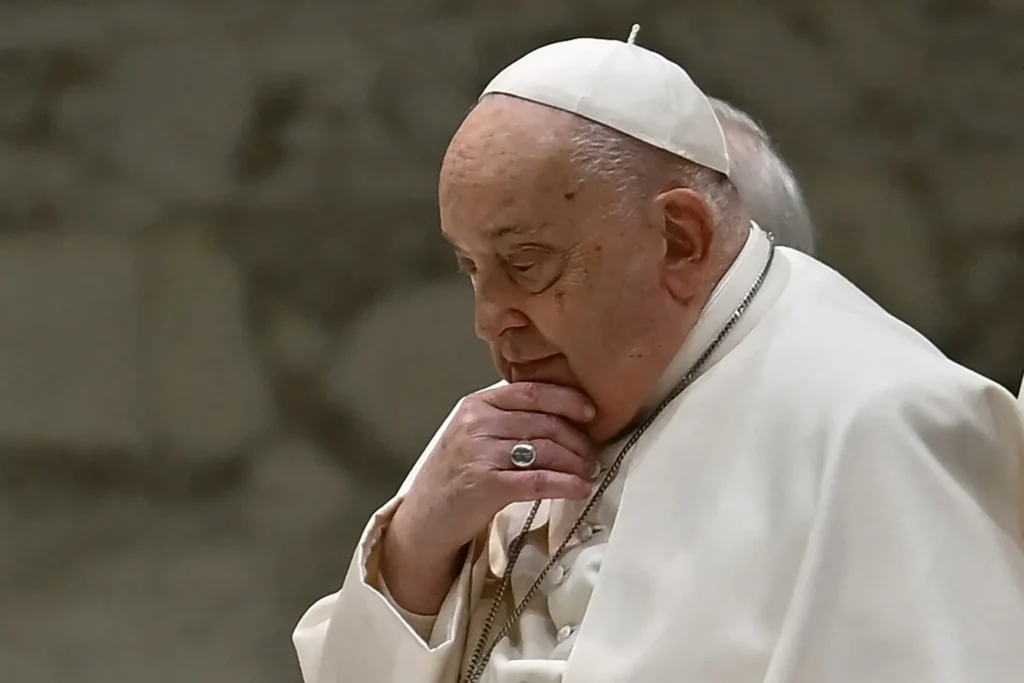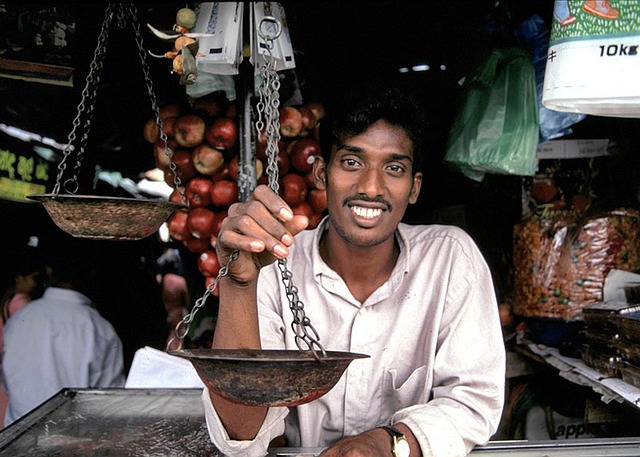Pope Francis in critical Condition

Pope Francis, aged 88, is currently in critical condition following a severe respiratory crisis. He was hospitalized on February 14 at Rome’s Gemelli Hospital due to a complex lung infection, which has since developed into bilateral pneumonia. The Vatican has reported that the Pope experienced a prolonged asthmatic respiratory crisis, necessitating high-flow oxygen therapy and blood transfusions to address a low platelet count. Despite being conscious and alert, his medical team emphasizes that he remains in a precarious state, with the risk of sepsis being a significant concern. In light of his health challenges, discussions regarding a potential successor have intensified within the Roman Catholic community. The College of Cardinals, responsible for electing a new pope, is reportedly engaging in behind-the-scenes deliberations. Figures such as Cardinal Matteo Zuppi and Cardinal Sean O’Malley have been mentioned as possible candidates, subtly positioning themselves through public engagements. These developments highlight the intricate political dynamics within the Vatican, reminiscent of a Renaissance court, with various factions and rivalries influencing the decision-making process. Meanwhile, in Latin America, the Pope’s birthplace, there has been an outpouring of support and prayers for his recovery. Catholics across the region, from Mexico to Argentina and Brazil, have participated in masses, lit candles, and offered individual prayers, reflecting a deep cultural and spiritual connection to the first Latin American pope. Despite a decline in the percentage of Catholics in the region over the past decades, the faithful remain devoted, rallying in solidarity during this critical time. As the situation unfolds, the Vatican has dismissed rumors of a potential resignation, emphasizing that discussions should focus on the Pope’s recovery. Pope Francis continues to work from his hospital bed, demonstrating resilience and dedication to his duties, even as he faces significant health challenges.
Sri Maha Bodhi: The World’s Oldest Tree with a Recorded History

The Sri Maha Bodhi tree, located in the sacred city of Anuradhapura, Sri Lanka, holds the distinction of being the oldest tree in the world with a documented history. This sacred fig tree (Ficus religiosa) has been protected and worshipped for over 2,300 years, making it a significant cultural, religious, and historical landmark. A Sacred Gift from India The Sri Maha Bodhi tree is a direct descendant of the original Bodhi tree in Bodh Gaya, India, under which Siddhartha Gautama attained enlightenment and became the Buddha. In the 3rd century BCE, Emperor Ashoka of India, a devoted follower of Buddhism, sent a cutting of the tree to Sri Lanka as a gift. This sacred sapling was brought by Ashoka’s daughter, Sanghamitta Theri, a Buddhist nun, and was planted in Anuradhapura in 288 BCE by King Devanampiya Tissa, one of Sri Lanka’s first Buddhist rulers. A Living Symbol of Buddhism Since its planting, the Sri Maha Bodhi tree has been a focal point of Buddhist worship in Sri Lanka. Devotees believe that paying homage to the tree brings blessings, protection, and spiritual merit. Every year, thousands of pilgrims visit the site to offer prayers, flowers, and oil lamps. Protection and Conservation Recognizing its importance, Sri Lankan kings and Buddhist monks have safeguarded the tree for centuries. It has been continuously tended to, making it the oldest known tree in the world to have received such long-term care and protection. Historical records document various kings constructing protective barriers and irrigation systems to ensure the tree’s well-being. In modern times, the tree is carefully maintained by the Sri Lankan government and Buddhist clergy. Measures have been taken to protect it from environmental threats, and a golden fence surrounds the tree to prevent damage. Surviving the Test of Time Despite its long history, the Sri Maha Bodhi tree has faced challenges, including natural disasters and human threats. In 1985, during the Sri Lankan Civil War, the site was attacked by extremists, causing damage to the area, but the tree survived. A UNESCO World Heritage Site Anuradhapura, where the Sri Maha Bodhi tree stands, is recognized as a UNESCO World Heritage Site due to its rich historical and religious significance. The ancient city is home to many other Buddhist monuments, including stupas, monasteries, and sacred ponds. The Legacy of Sri Maha Bodhi The Sri Maha Bodhi tree is not just a historical artifact; it remains a vital part of Sri Lanka’s Buddhist culture. It serves as a symbol of peace, enlightenment, and resilience. As the world’s oldest tree with a recorded history, it continues to inspire millions, reminding them of the deep spiritual and historical roots of Buddhism in Sri Lanka.
Things You should Know About The Murder Of Ganemulle Sanjeewa

Underworld Gangster ‘Ganemulle Sanjeewa’ was injured in a shooting at the Hultsdorf Court Complex on Wednesday (19) morning. Ganemulle Sanjeewa Dies In Hultsdorf Court Shooting Sanjeewa Kumara Saman Rathna, also known as Ganemulle Sanjeewa, an organized crime figure, was shot dead at the Hultsdorf No. 05 Court Complex this morning (19) . Sri Lanka police reported that the shooting was carried out with a revolver. Ganemulle Sanjeewa was attending a court hearing when the incident occurred. The assailant, disguised as a lawyer, carried out the attack. The firearm used in the murder was found abandoned at the court premises. Following the shooting, the suspect fled the scene, and police investigations are currently underway to locate the perpetrator. Sri Lanka Hunts for Disguised Gunman In Court Shooting Four police teams have been deployed to investigate the shooting incident at the Hultsdorf No. 05 Court Complex. Senior police officials have confirmed that officers from the Colombo Crime Division have also been called in to assist with the investigation. The shooting, which occurred this morning, resulted in the death of Sanjeewa Kumara Samararathna, also known as Ganemulla Sanjeewa, an organized crime figure. According to police reports, Ganemulla Sanjeewa was shot with a revolver while attending a court hearing. The assailant, disguised as a lawyer, carried out the attack and fled the scene immediately after the shooting. The firearm used in the murder was later found abandoned on the court premises. Police investigations are currently underway to locate the suspect and bring them to justice. ‘Ganemulle Sanjeewa’ Murder: Shooter Arrested Sanjeewa Kumara Samararatne alias ‘Ganemulle Sanjeewa’, a notorious organized crime leader, was shot dead on Wednesday (19) morning inside Courtroom No. 5 of the Magistrate’s Court Complex in Hultsdorf, Colombo. The shooter, who carried out the murder disguised as a lawyer, was arrested on Wednesday (19) evening in Palaviya, Puttalam. Security concerns have emerged following the incident, as the shooter and an accomplice bypassed routine checks by posing as legal professionals. Attorney-at-Law Senaka Perera questioned the necessity of physically bringing the detainee to court, suggesting that video links could have been used for remand extensions. Minister of Justice Harshana Nanayakkara assured that the government would enhance courtroom security and implement new laws, including video links for evidence submission. He rejected allegations of STF negligence, stating that the shooter took advantage of security lapses.
Sri Lanka With The 2025 Classic Car Rally

The Sri Lanka Classic 2025 rally, mix of pre-war, vintage, and classic cars, got underway in Waikkal on Tuesday (18) morning. Organized by Destination Rally, it promises an extraordinary 15-day adventure through the enchanting landscapes of Sri Lanka. The rally running until March 3, 2025, will see participants traverse 1,682 kilometers of the island’s most scenic routes. Starting in Waikkal and concluding in Colombo, the rally will take participants through a tapestry of emerald paddy fields, mango groves, mystical forests, and coastal roads. Highlights include the ancient cities of Anuradhapura, Jaffna, Polonnaruwa, and Galle, each rich with architectural heritage and historical significance. Participants will experience the serene beauty of Trincomalee’s beaches, the majestic Sigiriya rock fortress, and the sacred city of Kandy. The journey continues through the lush tea plantations of Nuwara Eliya and the wildlife-rich national parks of Minneriya and Yala, home to wild elephants and elusive leopards. With a mix of pre-war, vintage, and classic cars, the Sri Lanka Classic 2025 rally is an experience, blending adventure, culture, and luxury. Image Courtesy
Poor Air Quality in Ratnapura and Embilipitiya: Warning

The National Building Research Organization (NBRO) has reported that air quality in several regions of Sri Lanka has reached hazardous levels. According to the NBRO’s report, the air quality index (AQI) in Ratnapura’s Gatangama area ranges between 108 and 116 units. In Embilipitiya, the AQI is recorded between 100 and 108 units. According to the air quality index, an AQI below 50 is considered good. However, the current AQI in Colombo, Jaffna, Kurunegala, Kandy, Kegalle, and Galle exceeds 60 units. In Nuwara Eliya’s Magastota area, the AQI ranges between 44 and 52 units. Individuals with respiratory issues are advised to be cautious.
India’s Adani To Withdraw From Wind Power Projects in Sri Lanka

India’s Adani Green Energy said it will withdraw from two proposed wind power projects in Sri Lanka, according to a letter sent by the company to a Sri Lankan government agency. The Sri Lankan government said last month it has started talks with the Adani Group to lower the cost of power from the $1 billion projects. “It was learnt that another Cabinet appointed negotiations committee and Project Committee would be constituted to renegotiate the project proposal,” the company wrote in a letter addressed to the chairman of Sri Lanka’s board of investment. “This aspect was deliberated at the Board of our company and it was decided that while the company fully respects the sovereign rights of Sri Lanka and its choices, it would respectfully withdraw from the said project,” the letter, dated February 12, said. Source: Reuters
Jesus and Sri Lanka: Faith, History, and Influence

Jesus Christ, the central figure of Christianity, has had a profound impact on cultures and nations worldwide, including Sri Lanka. While Sri Lanka is predominantly a Buddhist country, Christianity has played a significant role in its history, shaping its religious landscape, social structures, and cultural interactions. This article explores the connection between Jesus and Sri Lanka, tracing the arrival of Christianity, its influence, and how the teachings of Jesus continue to resonate in the country. Christianity’s Arrival in Sri Lanka Christianity is believed to have first reached Sri Lanka in the early centuries AD, possibly through traders and missionaries from the Middle East and India. According to some historical accounts, St. Thomas the Apostle, one of Jesus’ disciples, traveled to India around 52 AD, establishing Christian communities in the Malabar region. Since Sri Lanka had strong trade ties with South India, it is possible that Christianity reached the island through these interactions. However, the more documented spread of Christianity began with the arrival of the Portuguese in 1505. The Portuguese brought Roman Catholicism to Sri Lanka, actively converting locals, particularly along the western coastal regions. They built churches and introduced Christian education and missionary activities. Later, the Dutch (who arrived in the 17th century) promoted Protestant Christianity, mainly through the Dutch Reformed Church, followed by the British (who took control in 1796), who encouraged Anglicanism and other Protestant denominations. Jesus’ Teachings and Sri Lankan Society The message of Jesus—love, compassion, forgiveness, and service to others—has influenced Sri Lanka’s Christian communities and beyond. Many Christian institutions, including schools, hospitals, and charitable organizations, have been inspired by Jesus’ teachings to serve society. Some of Sri Lanka’s leading educational institutions, such as St. Joseph’s College and St. Bridget’s Convent, were founded by Christian missionaries and continue to play a vital role in the country’s education system. Christianity in Sri Lanka also emphasizes interfaith harmony. While there have been periods of religious tension, many Sri Lankans, regardless of faith, admire Jesus as a spiritual teacher. Some Buddhists see Jesus as a Bodhisattva (an enlightened being who seeks to help others), appreciating his compassion and selflessness. Christian Festivals and Worship in Sri Lanka Christmas and Easter, the two major celebrations in Christianity, are widely observed in Sri Lanka, even by non-Christians. Christmas, commemorating the birth of Jesus, is marked by church services, nativity plays, and festive decorations. Easter, celebrating Jesus’ resurrection, is observed with special church services and processions. Churches, such as St. Lucia’s Cathedral in Colombo and the Basilica of Our Lady of Lanka in Tewatte, serve as important religious centers where Sri Lankan Christians gather to worship and reflect on Jesus’ life and teachings. The Shrine of Our Lady of Madhu in Mannar, one of the most revered Christian pilgrimage sites in Sri Lanka, attracts thousands of believers every year. Miracles and Legends Associated with Jesus in Sri Lanka Over the years, there have been stories and testimonies of divine interventions attributed to Jesus in Sri Lanka. Many Sri Lankan Christians believe in miraculous healings and blessings received through prayer. The influence of Jesus is also evident in popular Sri Lankan Christian hymns and devotional music that reflect deep faith and reverence. Conclusion While Christianity is a minority religion in Sri Lanka, the teachings of Jesus Christ continue to inspire many. His message of love, peace, and forgiveness resonates beyond religious boundaries, contributing to interfaith dialogue and social harmony. From historical influences to modern-day Christian communities, Jesus’ legacy in Sri Lanka remains strong, shaping lives and strengthening faith across generations.
Is It Worth Visiting Sri Lanka? A Complete Travel Guide

Sri Lanka, the “Pearl of the Indian Ocean,” is a destination that offers breathtaking landscapes, rich history, and diverse wildlife. But is it really worth visiting? If you’re planning your next adventure, here’s why Sri Lanka should be on your bucket list. Stunning Natural Beauty Sri Lanka boasts some of the most picturesque landscapes in the world. From golden sandy beaches to lush green mountains, the country offers diverse natural beauty. Beaches – Unwind at pristine beaches like Mirissa, Unawatuna, and Arugam Bay. Hill Country – Explore the scenic beauty of Ella, Nuwara Eliya, and Kandy. Waterfalls – Witness mesmerizing waterfalls such as Ramboda Falls and Diyaluma Falls. Rich Culture and History Sri Lanka’s history dates back thousands of years, with influences from Buddhism, Hinduism, and colonial powers. Ancient Cities – Visit UNESCO World Heritage sites like Anuradhapura, Polonnaruwa, and Sigiriya. Temples – Experience spirituality at the Temple of the Tooth Relic in Kandy. Colonial Influence – Discover Dutch and British-era architecture in Galle and Colombo. Wildlife and Adventure If you love wildlife and outdoor activities, Sri Lanka is a paradise. Safari Tours – Spot elephants, leopards, and exotic birds at Yala, Wilpattu, and Udawalawe National Parks. Whale Watching – Get a chance to see blue whales and dolphins in Mirissa. Hiking – Trek up Adam’s Peak or explore Horton Plains National Park. Delicious Cuisine Sri Lankan food is a treat for your taste buds. From spicy curries to seafood delights, you’ll love the variety. Rice and Curry – The staple dish of Sri Lanka. Hoppers & Kottu Roti – Must-try street food. Fresh Seafood – Enjoy crab curry and grilled fish at coastal towns.Affordable Travel Destination Compared to other tropical destinations, Sri Lanka is budget-friendly. Accommodation, transportation, and food are reasonably priced, making it ideal for backpackers and luxury travelers alike. Warm and Friendly Locals Sri Lankans are known for their hospitality. Whether you’re in a bustling city or a rural village, you’ll always be greeted with a warm smile. Is Sri Lanka Worth Visiting? Absolutely! Whether you’re a nature lover, history enthusiast, or adventure seeker, Sri Lanka has something for everyone. With its affordable travel costs, welcoming people, and diverse attractions, it’s a destination you shouldn’t miss. Plan Your Trip to Sri Lanka Today! Ready to explore Sri Lanka? Book your tickets, pack your bags, and get ready for an unforgettable journey!
Weekly Pola In Sri Lanka according to the districts – ශ්රී ලංකාවේ සති පොල

“weekly pola” in Sri Lanka refers to a local, weekly farmers market, where people gather to buy fresh produce, spices, herbs, and other local goods, essentially a vibrant community market often considered the center of trade in rural villages; “pola” is the Sinhala word for market. You can click below districts to find the list of Weekly Pola or Sathi Pola. Ampara, Anuradhapura, Badulla, Batticaloa, Colombo, Galle, Gampaha, Hambantota, Jaffna, Kalutara, Kandy, Kegalle, Kilinochchi, Kurunegala, Mannar, Matale, Matara, Monaragala, Mullaitivu, Nuwara Eliya, Polonnaruwa, Puttalam, Ratnapura, Trincomalee, Vavuniya.
What’s driven the phenomenal performance in China’s film industry?

People are seen at a cinema in the Xicheng District of Beijing, capital of China, February 3, 2025. /Xinhua Editor’s note: Liu Chunsheng, a special commentator on current affairs for CGTN, is an associate professor at the Beijing-based Central University of Finance and Economics. The article reflects the author’s opinion and not necessarily the views of CGTN. During the Spring Festival of 2025, the Chinese film market achieved historic results, breaking multiple records in box office revenue. So far in 2025, the total box office revenue of the Chinese film market has reached 10.5 billion yuan (about $1.46 billion), surpassing the North American market and ranking first in the world. This achievement is not only a milestone in the development of China’s film industry, but also marks the growing strength of China’s cultural industry. In recent years, the Chinese film market has shown explosive growth, with box office revenue exceeding 60 billion yuan in 2019. With the gradual improvement of the industry chain, continuous innovation in technology and the improvement of the audience’s consumption level, the Chinese film market has gradually shifted from a “chaser” to a “leader” in the global film industry. There are multiple factors behind this phenomenon. Firstly, the content creation of China’s domestic film industry is increasingly rich. In recent years, many excellent domestic films have been released, such as “Wolf Warrior II” to “Hi, Mom” to “The Wandering Earth II.” These films have achieved great box office results in the domestic market and also gained increasing recognition in the international market. Secondly, the continuous innovation of technological means, especially the application of IMAX, 3D and other technologies, has enabled Chinese films to reach world-leading levels in visual effects, providing audiences with a more immersive viewing experience. In addition, with the rise of online platforms, the integration of online movie watching and offline cinemas has also promoted the prosperity of the film market. The rise of China’s film market reflects the enhancement of Chinese cultural confidence. Among the numerous domestic films in 2025, “Ne Zha 2” is undoubtedly a landmark work. It is predicted that this film may set a new box office record in the history of Chinese film. This film not only continues the popularity of its predecessor, but also achieves breakthroughs in multiple dimensions such as creation, technology and cultural expression. Every fight and scene transition in the film has been carefully scheduled and designed to maximize the visual and emotional impact. The film has sparked widespread discussion and sharing, quickly setting off a “Ne Zha craze” on the Internet. This proves the strong influence of Chinese animated films in the Internet era and shows the successful exploration of digital communication and cross-platform operation in China’s film industry. The sales of peripheral products of the film have also been greatly improved, driving the development of the entire entertainment industry chain. People walk out of a movie screening room at a cinema in Kunming, southwest China’s Yunnan Province, February 3, 2025. /Xinhua The success of the 2025 Spring Festival’s economic performance is not only reflected in its box office, but also creates a new benchmark for the economic value of China’s film industry. The film itself has become an important engine to promote the cultural tourism industry. The development of film-themed exhibitions, interactive experience zones and tourist attractions has further boosted the growth of the relevant regional economy. Moreover, the derivatives of movies have also become a new economic growth point. In particular, the classic scenes and characters in the film have become the source of cultural and creative products, providing fans and audiences with more diversified consumption choices. The deep integration of film with tourism and cultural industries can form a powerful industrial effect. In the future, cross-border cooperation in film and development of cultural products will become one of the important driving forces for the sustained growth of China’s cultural and entertainment industry. Although the Chinese film market has so far achieved historic results in 2025, this is not the end point and the future development is still full of challenges and opportunities. To achieve sustainable growth in the Chinese film market, it is necessary to focus on the originality and quality of content first. It’s also worth noting that China’s film industry should pay more attention to innovation from the perspective of cultural connotation and narrative depth and avoidance of the short-sighted behavior of “box office supremacy.” Furthermore, Chinese films should enhance international cooperation. In the process of “going global,” it’s necessary for the Chinese film industry to respect local culture and take into account the needs of the international market to create works with global appeal.
